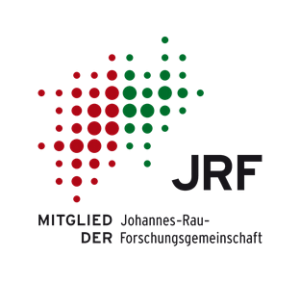FreeHydroCells: looking for a breakthrough in solar hydrogen fuel generation
Converting solar energy into chemical energy is something where plants excel, and technology still struggles. In the EU-funded project FreeHydroCells, AMO GmbH and partners aim to overcome the limitations of today’s approaches to synthetize hydrogen fuel by solar energy absorption. This could potentially represent a viable, and environmentally friendly alternative to fossil fuels.

The sun offers a nearly unlimited supply of energy to our planet, and yet it accounts today for less than 7% of the energy generated in the EU [1]. The reason lies in the difficulty of transforming solar energy into other forms of energy that can be utilized and stored. Millions of years of evolution have endowed plants with an efficient process for synthetizing energy in the form of sugar using sunlight, water, and carbon dioxide. The project FreeHydroCells aims to develop a new photoelectrochemical system capable of splitting water to generate molecular hydrogen using solar light.
Inspired by nature
The core idea is to mimic the solar-energy absorption potential of a leaf by arraying cascades of nanometer-thick semiconducting materials as buried pn-junctions. Careful band engineering will allow for designing a potential landscape able to drive the photoelectrochemical water-splitting reaction and to avoid charge recombination by built-in electric fields, so that the system will be able to generate molecular hydrogen when submerged in water and exposed to sunlight, without the need of external power supply.
Reaching this goal is certainly easier said than done. It requires a number of scientific breakthroughs in specific areas, all of which have to be made to work together in order to achieve the full impact of the project. FreeHydroCells is a high-risk/high-reward exploratory project – as required by the EU-funding call. If fully successful, FreeHydroCells will provide a clean and efficient way of producing hydrogen fuel and offer a viable alternative to fossil fuels. Even if only partly successful, the project has the potential for meaningfully advancing science and technology and providing a baseline for further exploration.
A strong team
The project is funded by the European commission with a €3,75 million budget and will run for three years. Coordinated by the University College Cork (Ireland), FreeHydroCells brings together a multidisciplinary consortium of partners across Europe, including Tyndall National Institute (Ireland), Commissariat a l’Energie Atomique et aux Energie Alternatives (France), RWTH Aachen University (Germany), Consiglio Nazionale delle Ricerche (Italy), AMO GmbH (Germany), BARDS Acoustic Science Labs (Ireland). and UCC Academy (Ireland).
FreeHydroCells’ coordinator, Dr. Ailbe Ó Manacháin, says that he “cannot stress enough the importance of team effort and multi-disciplinary collaboration to actually achieve the project’s ambitious objectives. Each of the consortium’s seven partners is bringing specific and specialized expertise, knowledge and infrastructure, which is essential to the project. Any level of achievement in the project will not be possible without the strong input and high-intensity collaboration from all my expert colleagues.”
In the project, AMO will be involved in development of the novel photoelectrochemical cells, leading one work package and closely collaborating with the partners throughout all the work packages and tasks. “It will be both challenging and exciting to grow, characterize and optimize the multilayer junctions to form these complex cells for harvesting and transforming solar energy efficiently. A process that appears effortless in nature will require a great deal of creativity and engineering to be brought into use, but the potential payoff for our global energy supply is immense”, says Dr. Ulrich Plachetka, leader of the Sensor Technology Group at AMO.
The project has received funding from the European Union’s Horizon Europe research and innovation programme under grant agreement No 101084261 (FreeHydroCells).
More information on the project webpage: https://freehydrocells.eu/
[1] Source: https://energy-charts.info/charts/energy_pie/chart.htm?l=en&c=EU&interval=year&year=2022




